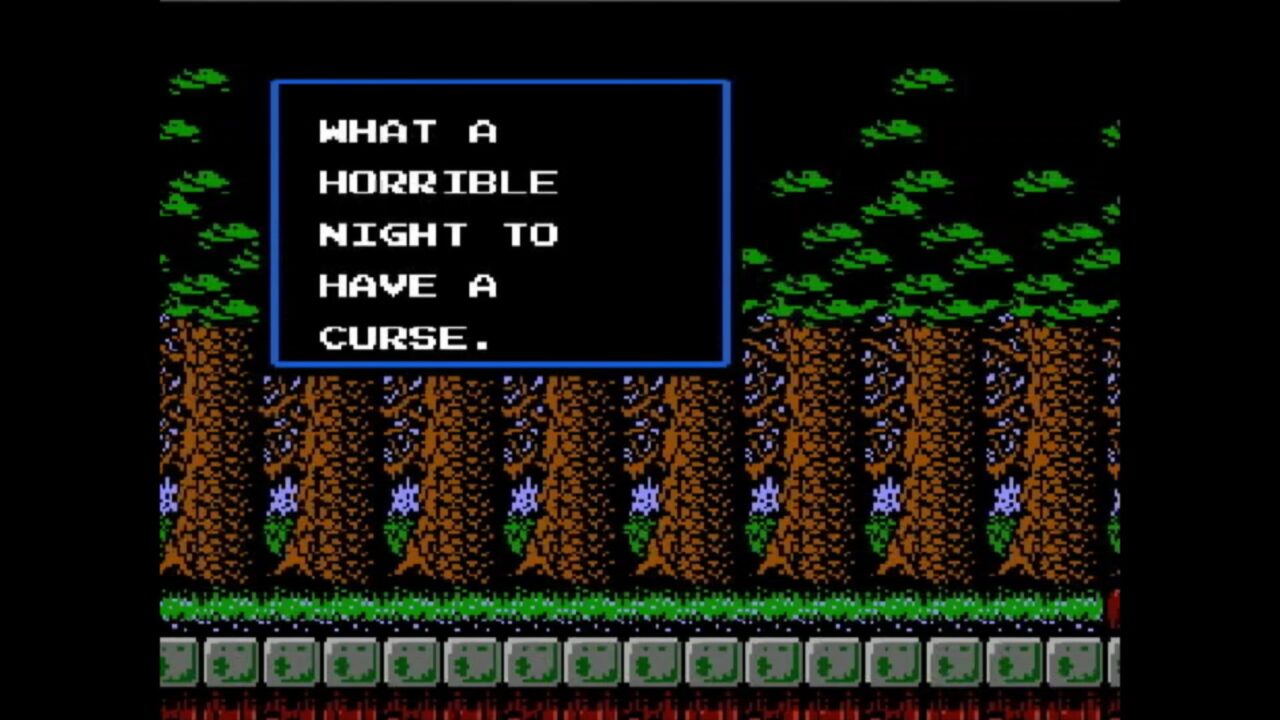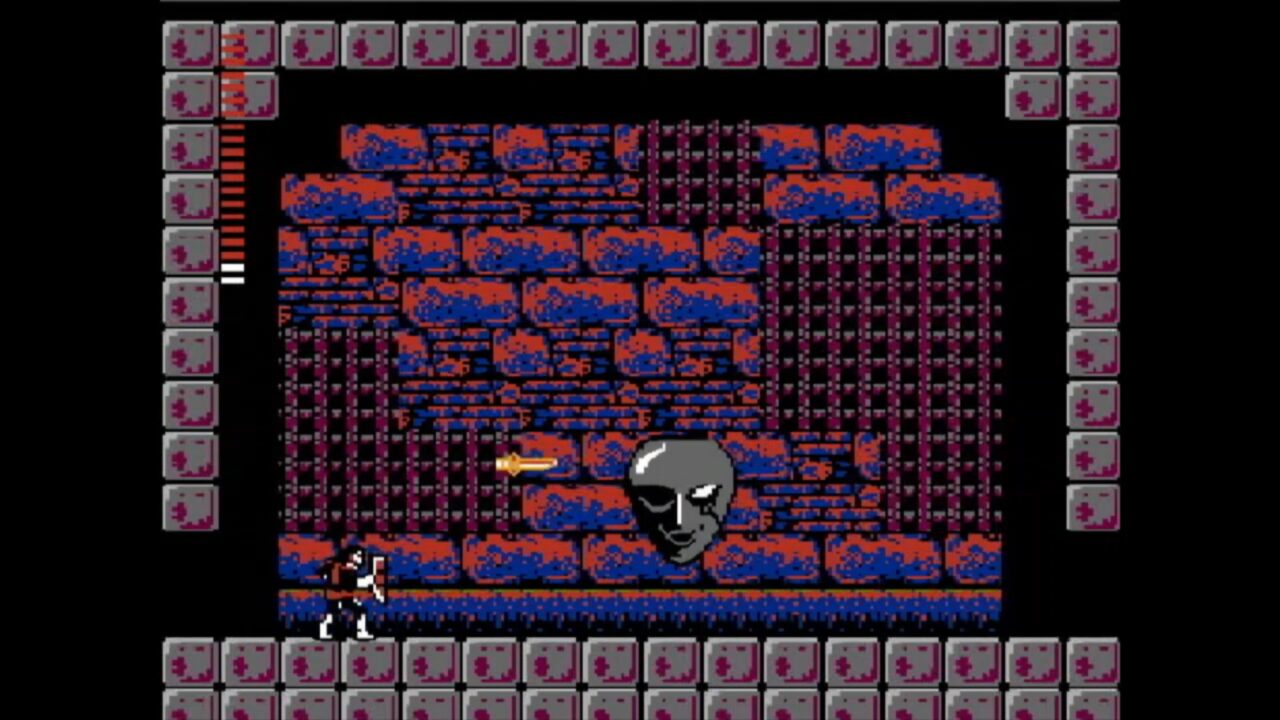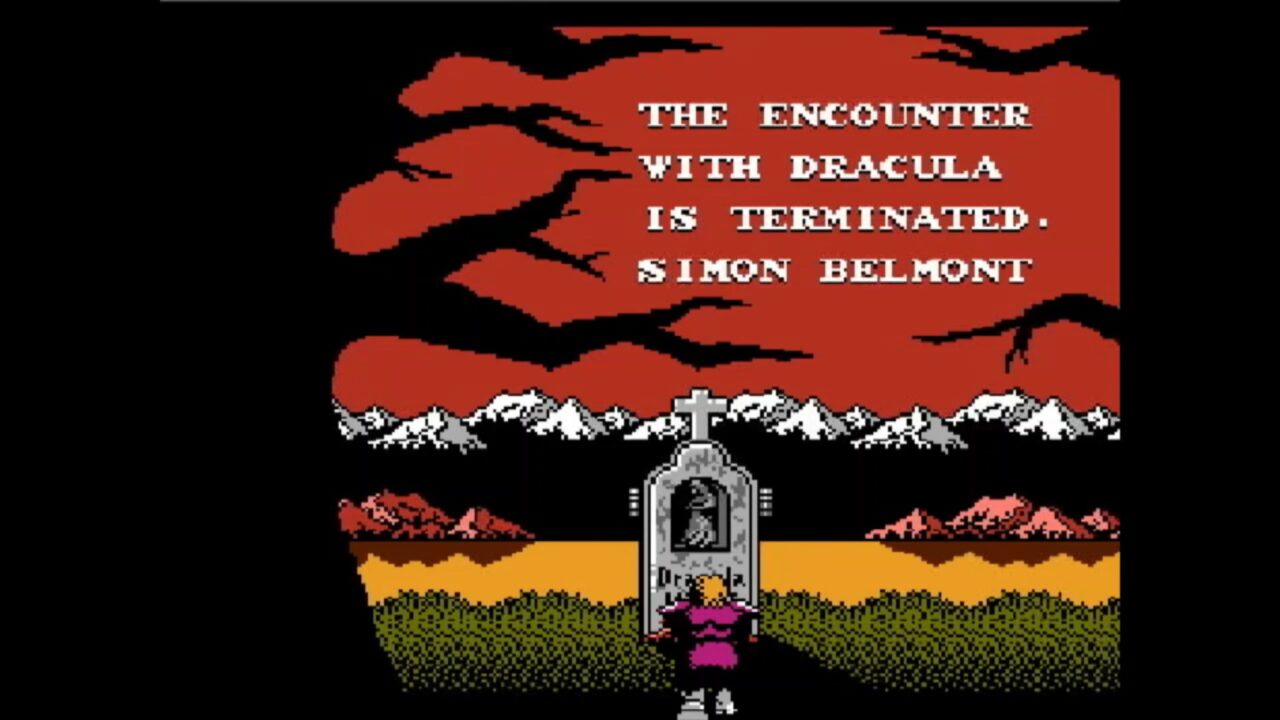Castlevania 2: Simon’s Quest – An Unmatched Experience in Despair

The Castlevania Advance Collection has once more welcomed us to Dracula’s Castle and the surrounding haunted countryside. We’re free to meander decaying halls. Free to whip all manner of creatures from folklore and monstrous imagination. Exploring spooky, gloomy places while fighting monsters made the three GBA titles in this collection into must-haves for me when they came out. They’re still must-haves now. However, their formula owes a tremendous debt to the ambitious, if often-maligned, Castlevania 2: Simon’s Quest.
Although, arguably, Simon’s Quest took things farther, and in a more interesting direction, than any of those later games ever did.
This game was aiming to be something special when it came out. While most titles would put the hero into a new game that played largely like the first, this one really leaned into its horror themes. Simon may have defeated Dracula in the first game, but he was suffering for it. His wounds left cursed scars that were slowly killing him. In this weakened state, he’d have to go locate the torn body parts of the fallen Count and burn them in Dracula’s castle. For some grim reason, these parts were spread across the countryside, forcing the wounded warrior to seek them out.
Burning Count Dracula’s stolen body parts in the ruins of his castle to cure yourself of a curse. That is one wild story for game, and a heck of a sequel story idea. Especially one on the NES. The story alone made Castlevania 2: Simon’s Quest special before you even inserted the cartridge. You’re a dying man who’s been suffering for seven years since Dracula’s fall. A hero withering, and weakening even when you won. Now, days from succumbing to the curse, Simon has to look for body parts that are…somewhere out in the world. And Dracula’s forces seem to be on the move, growing ever-stronger despite their master’s absence.

A dying hero made for an incredible motivation to take up the Vampire Killer whip and hunt down evil again. It also set a certain mood for the game that permeated its every design decision. Starting off weak and growing in strength as you progress through the game? Makes sense for a former hero who’s dying of a curse. Even his growing power works with his likely ever-growing desperation. Now, add a world filled with monsters with little guidance on where to go. Townsfolk whispering half-truths and cruel lies to mislead you when you search for clues. You’re lost and dying for much of the game, loaning it this ever-increasing sense of despair.
That same mood would even make certain elements from the past games make more sense. Simon’s plodding pace makes sense if he’s trying to push his dying body forward. His slow whip motion draws up the image of a man fighting for every ounce of strength to swing his weapon. Suffering seems to permeate the entirety of Castlevania 2: Simon’s Quest, whether in its new elements or the ones it drew from the previous game.
That feeling of being lost is what made the game stand out, though. The game takes place across the countryside of Transylvania. It’s an interconnected series of forests, graveyards, lakes, towns, and mansions. It’s a sprawling open world instead of a bunch of separate levels. While it’s far from a maze, many secrets make exploration a challenging mystery much of the time. Certain behaviors and items are required to move on, and the clues are rarely straightforward.

Solving the mystery of what to do meant talking to lots of people. Backtracking often. Trying odd things. Delving into dangerous places over and over. These things were hard enough as is, but Castlevania 2: Simon’s Quest also featured an infamous day/night system. At night, monsters would grow stronger. They’d be able to endure more hits and damage you more. Towns, normally where you could heal and get clues, would be overrun with creatures themselves. Simon would already be pushing himself all day to overcome the curse, only to face this new hell every night.
Don’t forget that time limit on your life, either. If you take much longer than seven in-game days to beat the game, you’ll still die in the ending. Simon’s has been dying for a while, after all. So, no hunkering down to wait for the safety of daytime. No time for a weakened hero to rest.
These exploration elements would be the basis of many of the games that filled the Castlevania Advance Collection. Exploring the castle and areas surrounding it, all while dealing with a whole slew of interesting enemies, made for some great games. That mixture of the pleasure of wandering this world and dealing with neat monsters kept me coming back for each of the GBA and DS titles that played in this format. To me, there’s an endless appeal in the format, and Castlevania 2: Simon’s Quest was the first to try it.
But it did so with that weight of despair permeating it. Most of the Castlevania games presented us with strong heroes. (Relatively) Straightforward paths. Mysteries that weren’t especially difficult to unravel. This game was willing to let the player get lost. Punish them at times when they needed help most. Outright lie to them to keep them from finding the right path. Attack them with cruel traps. The game is built to crush its players with the weight of Simon’s suffering and his unfair fate. Not a great way to retire after being a successful vampire hunter.

Castlevania 2: Simon’s Quest is full of unfair challenges for a dying man. It presents you with a massive world to explore and wild monsters to overcome, all things that made those later GBA and DS games so popular, but it’s that cruel streak that I feel turned players off of the game. It feels like a game built to grind players down. There’s little in the way of direction. People in towns sometimes just straight up lie to you about what to do. The paths are long and arduous. Items cost a ton, but grinding for hearts (the game’s currency) eats up the little time you have to complete the game. And when the night falls and everything grows worse, how will you survive it?
This game captures the despair of a dying hero. A hero who is watching the world he hoped he’d saved tumble back into darkness. You see what the night holds for the people as you drag Simon’s cursed body across the world. Trudge through the mansions of cruel beings who seem to worship the discarded body parts of their fallen master. It’s a sickly, terrible fate, and while it can make for a game that feels downright hostile to the player, creates an oppressive, dark, and depressing atmosphere that is unmatched.
Castlevania 2: Simon’s Quest is the reason why the games in the Castlevania Advance Collection exist. Its mixture of exploration and the gothic world of monsters and folkloric nightmares is an appealing combination, and one that definitely became popular in later iterations. While I understand that many of its design elements felt hostile to players, it still captured a sense of despair that few games matched. It’s a game that suffered for its ambition – for seeking to explore the emotions games could make players feel.
Categorized:Editorials

